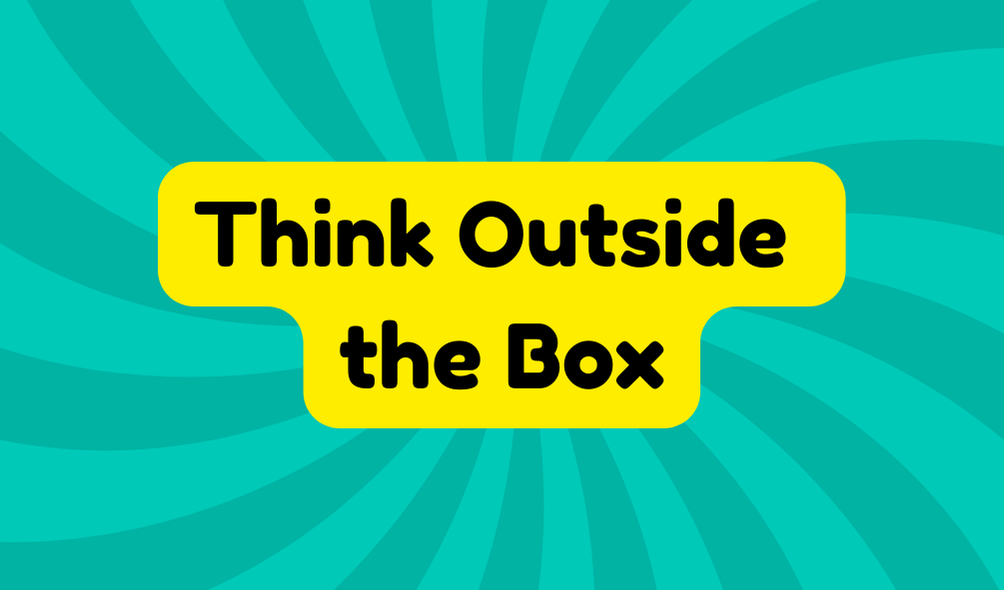Thinking outside the box means using unconventional ideas for problem-solving and innovation. This concept gained popularity in American business circles during the late 1960s and is linked to movements like blue-sky and lateral thinking. While the phrase has become a cliché, it remains essential in encouraging originality and creativity. However, repeatedly using these terms can lessen their impact. By examining real-world examples, individuals can more effectively engage with this important concept and understand its ongoing relevance.
Synonyms
Creative thinking is often encouraged as a means to solve problems in innovative ways, and this has led to the use of various synonyms for the concept of "thinking outside the box." Phrases such as "blue-sky thinking" and "lateral thinking" surface frequently in discussions about innovative problem-solving. Despite their popularity, these terms can sometimes create confusion. An innovative mindset requires understanding these concepts deeply:
- Blue-sky thinking: Freeing oneself from limitations to explore bold ideas.
- Lateral thinking: Finding creative solutions through unconventional approaches.
- Out-of-the-box thinking: Challenging norms to reveal fresh perspectives.
Engaging with these synonyms thoughtfully can inspire real innovation.
Example of Sentences
Innovative thinking often finds its expression in various phrases that encourage breaking free from traditional constraints. While several sentences exemplify the concept of thinking outside the box, not all yield effective outcomes. Consider these examples:
- "They utilized creative solutions to reduce costs without compromising quality."
- "Her unconventional approaches to marketing led to unexpected success."
- "In challenging circumstances, teams thrived by embracing original ideas."
Each sentence illustrates the balance between aspiration and practicality. Ultimately, one must recognize that excellence in innovative thought requires not just creativity, but also thoughtful application, ensuring that ideas don't remain mere slogans devoid of action.
Origin
The phrase "think outside the box" has a fascinating yet somewhat tangled origin rooted in the landscape of American business culture. Emerging in the late 1960s, it reflects a shift towards recognizing the importance of breaking creative boundaries. Linked to the Nine Dots Puzzle, it highlights the need for lateral thinking, attributed to Edward De Bono. Although once invigorating, its phrase evolution has led to a cliché often dismissed for its lack of originality. Below is a brief overview of its developmental context.
| Year | Publication | Significance |
|---|---|---|
| 1975 | Aviation Week & Space Technology | First known citation |
| 1967 | Lateral Thinking book | Concept introduction |
| 1914 | Nine Dots Puzzle | Illustrates creative limits |
| 2000s | Management literature | Cliché status recognized |
Collocations
In business and creative discussions, certain collocations frequently accompany the phrase "think outside the box," shaping its use and context. These pairings highlight the quest for fresh perspectives and actionable insights, though they often risk becoming clichéd.
- "Creative solutions" inspire originality and problem-solving.
- "Innovative strategies" promote forward-thinking approaches in competitive markets.
- "Breakthrough ideas" emphasize the importance of out-of-the-box thinking.
While these collocations aim to invigorate discussions, their overuse may lead to diminished impact. Therefore, professionals must endeavor to guarantee that these phrases contribute genuinely to fostering a culture of true innovation and creativity.
How to Use in Everyday Language
Using the phrase "think outside the box" in everyday conversation can enhance discussions, yet it often risks sounding cliché. To effectively incorporate it, individuals should aim for creative communication, ensuring the context aligns with innovative thinking. By associating the phrase with specific examples, one can avoid the trap of mundanity. Moreover, embracing flexible thinking allows for deeper exploration of ideas. Instead of relying solely on this phrase, consider alternatives that communicate the same spirit. Aware of its overuse, individuals must navigate conversations with awareness, aspiring to inspire true creativity rather than falling into predictable patterns that diminish intellectual engagement.
Why Is It Still Relevant Today?
Creative thinking remains an essential skill in today's fast-paced world, making the phrase "think outside the box" still relevant. As industries continue to evolve and challenges become more complex, businesses increasingly rely on creative strategies to develop innovative solutions. This emphasis on creativity is vital for adapting to market changes and fostering competitive advantages. However, the phrase risks becoming stale if not applied genuinely. Critics argue that mere recognition of the term does not guarantee innovation; practical application is paramount. Ultimately, truly thinking outside the box demands consistent effort and a commitment to fostering an environment where creativity can thrive.







